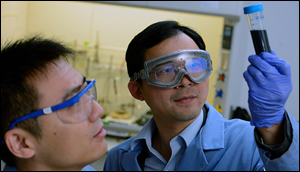More Flexible Nanomaterials Can Make Fuel Cell Cars Cheaper
22. 2. 2019 | Johns Hopkins University | www.jhu.edu
A new method of increasing the reactivity of ultrathin nanosheets, just a few atoms thick, can someday make fuel cells for hydrogen cars cheaper, finds a new Johns Hopkins study.
A report of the findings offers promise towards faster, cheaper production of electrical power using fuel cells, but also of bulk chemicals and materials such as hydrogen. “Every material experiences surface strain due to the breakdown of the material’s crystal symmetry at the atomic level. We discovered a way to make these crystals ultrathin, thereby decreasing the distance between atoms and increasing the material’s reactivity,” says Chao Wang, an assistant professor of chemical and biomolecular engineering at The Johns Hopkins University, and one of the study’s corresponding authors.

One example of how optimizing reactions can be useful in application is increasing the activity of catalysts used for fuel cell cars. While fuel cells represent a promising technology toward emission-free electrical vehicles, the challenge lies in the expense associated with the precious metal catalysts such as platinum and palladium, limiting its viability to the vast majority of consumers. A more active catalyst for the fuel cells can reduce cost and clear the way for widespread adoption of green, renewable energy.
Read more at Johns Hopkins University
Image Credit: Will Kirk/Johns Hopkins University
-jk-




